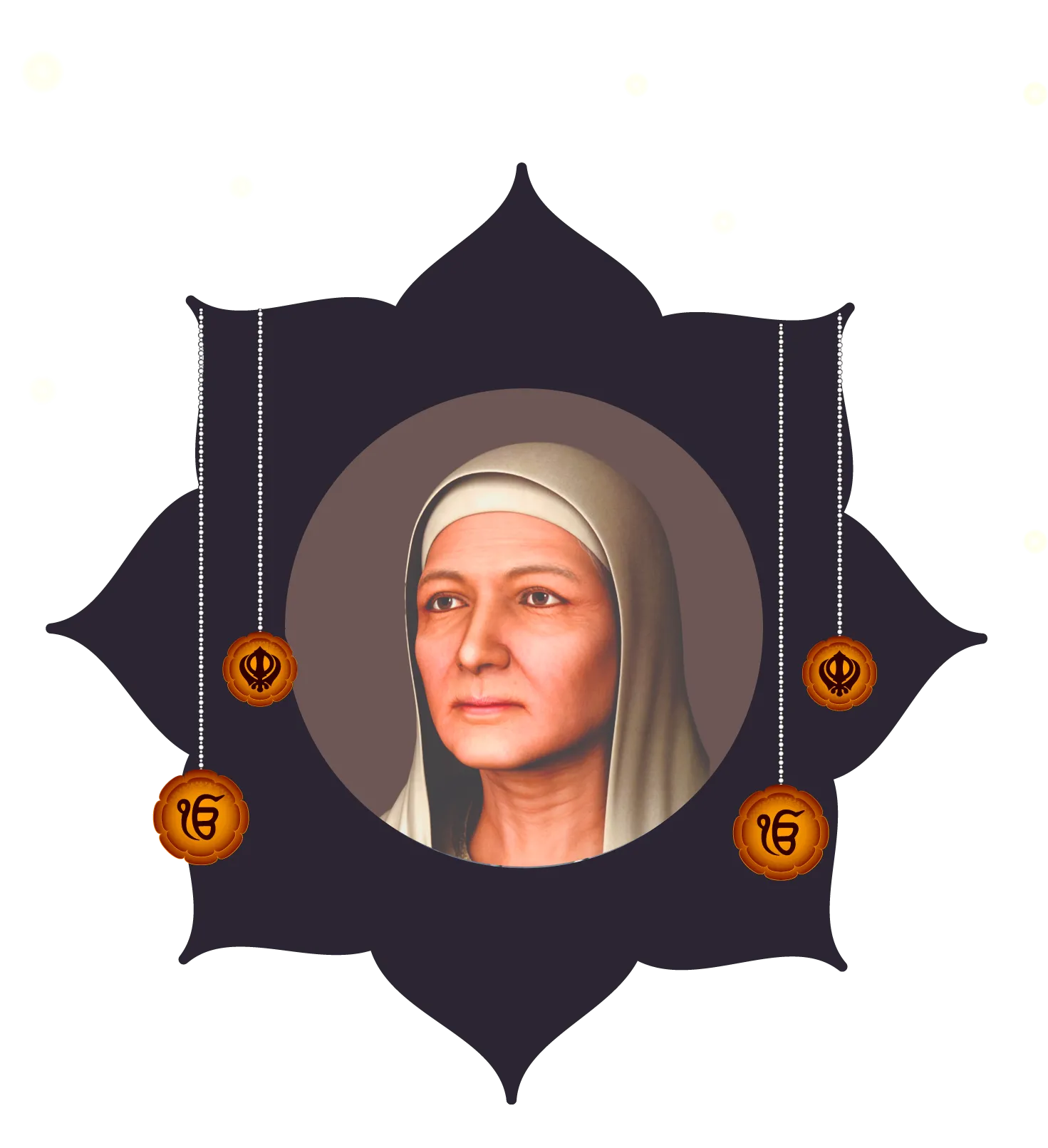
Mata Gujri was the wife of the ninth Sikh Guru, Guru Tegh Bahadur; the mother of the tenth and final human Sikh Guru, Guru Gobind Singh; and the grandmother of the four Sahibzade. She was born in 1624, the daughter of Bhai Lal Chand Subulikka and Bishan Kaur, a devout couple from Kartarpur in the Punjab district of Kapurthala. Her contribution to the evolution of the Sikh faith has been critical. She was the wife of a supreme martyr, the mother of a brave saint-soldier, and the grandmother of four extraordinary children who died at the ages of 6, 9, 14, and 18 years. She had grown close to the two younger sahibzades and agreed to be their guardian on the flight from Anandpur in exchange for safe passage to Punjab. Imprisoned in Sirhind's Thanda Burj with her two youngest grandsons, Zorawar and Fateh Singh, she became a martyr at the age of 81 when she learned of their execution.
Mata ji was raised with the awareness of the Guru's light; she exceeded her parents' expectations by growing into a perfect role model of grace, strength, perseverance, and sacrifice.
She supported Guru Tegh Bahadur Sahib Ji for years while he was deep in meditation, then again during his missionary tour, and finally when the Guru left for Delhi to make the ultimate sacrifice.
After her husband, Guru Tegh Bahadur, was martyred, she and her brother, Kirpal Chand, were in charge of the Panth's affairs. She also organized the langar (community kitchen) and was an important army administrator. During the battles that Guru Gobind Singh had to fight, she played an important role in inspiring the Khalsa armies. Her contribution to the Battle of Bhangani is particularly remembered.
She shaped the Khalsa's father, the great Guru Gobind Singh Ji, raising him as a single mother after Guru Teg Bahadur ji's martyrdom.
When Mata Ji and the sahibzadas were arrested and imprisoned in Sirhind Fort, and the children were summoned to appear in court every day, she urged them to keep their faith strong. She constantly reminded the Sahibzadas that their Grandfather and Great-Grandfather had both given their lives to uphold Guru Nanak's ideals. Her support for her grandsons was very influential in Sikhism. Because of her role, the seven and nine-year-old children did not budge from their beliefs and became martyrs.
Mata Gujri continued to do simran while imprisoned on top of an open tower in the cold month of December, despite her physical well-being. She became a martyr on the same day as her grandsons after learning that they had been bricked alive rather than abandon their faith. Her mission had been completed. Today, Mata Gujri is remembered and honored by Sikhs for her devotion and sacrifice. She is considered an important figure in the history of the Sikh faith.
Aurangzeb decided to transport Guru Ji in a cage to Delhi. The Qazi (Muslim priest) issued a Fatwa (religious order) demanding that Guru Ji embrace Islam, perform a miracle to prove their divinity, or face death. Guru Ji became Shaheed (martyr) on 19th December 1675 AD at Chandni Chowk, Delhi. This place is known as Gurdwara Sri Sis Ganj Sahib now.